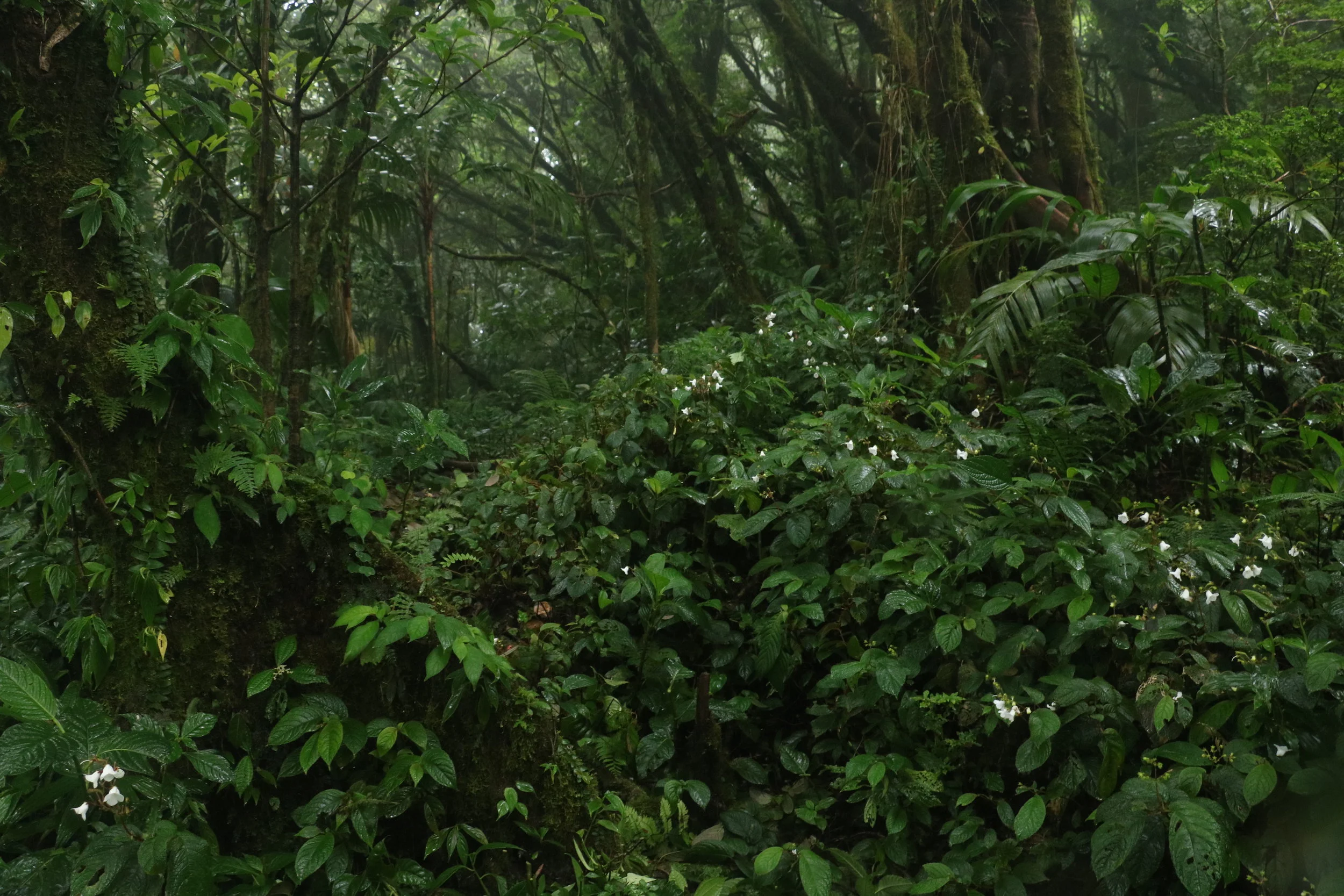After several minutes, we came to a fork in the trail, and the rangers indicated that we would follow the thin path to the left; it would take us down into the valley and eventually loop back up to return us to the place we stood. We took a minute to share some water, to kick the mud in clots from the bottoms of our rubber boots; Juan and Alvaro cleaned their machetes and then set off again down, down into the hidden valley. We left the continental divide and followed in their wake.
Into the Brillante: Part I
In the books that I’d been pouring over for the last few months, I’d read that the Brillante trail wound through the patch of elfin forest in which the Golden Toads were most consistently observed in the 1970s and 80s, and the Brillante is often reported to be one of the last locations in which the Golden Toad was ever seen. The trail has been closed to the public for decades, and a ranger from the Reserve walks it maybe six or seven times a year at most. Otherwise, the forest remains unentered. After talking through our project with officials at the Reserve and the local residents who recalled when the Golden Toads were plentiful along the trail, Pri was able to secure permission for us to enter the Brillante.
The Search for the Golden Toad
In the history of our brief time on this planet, many have gone looking for the fortune and glory that lies at El Dorado, but few have ever found it. Effectively, our search will be more a search for answers, a search for meaning— what caused the Golden Toad to disappear from the face of the planet? How has its absence affected the ecosystem, the town, and the people who knew it well? What does its story teach us about conservation, extinction, and resurrection; and why is its tale one of such intriguing fascination?
Extinction
When biologist Jay Savage first described the Golden Toad in 1964, hundreds of males were observed to gather for their annual breeding rituals in the ephemeral pools high on the ridge-line of the Monteverde Cloud Forest Preserve. This population was stable for more than 20 years, but declined sharply over a period of just 24 months; from the 1500 individuals observed in 1987, the population fell to a single toad seen at one of the well-known breeding pools in 1989— none have been seen for almost thirty years. The Golden Toad’s demise initiated the recognition of a global amphibian decline that continues to this day, and was the alarm bell for an extinction crisis that has continued to haunt the 21st century.
The Breeding Pools
I have never been to the specific places where the Golden Toads were known to gather— few living people have. The trail that once led there through the protected forest of the Preserve has been closed for decades, and the trees on either side of the path have conspired to entwine themselves across the empty spaces; they are the living guardians of the lost species’s history.
Toad's Past is Prologue
Close to ten years after my father introduced me to the Golden Toad, I moved to Monteverde for an internship with Karen and Alan Masters' study abroad programs, and I suddenly found myself in the land of clues. The Golden Toad was little on my mind in those years, but toward the end of my time in Costa Rica, I began to hear rumors - whispers - of an unconfirmed sighting of a Golden Toad, two years after it was supposed to have gone extinct. I talked with the local who had seen it, and I believed his story. I had, without really trying to, unearthed a clue to the mystery of the Golden Toad.






